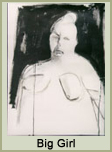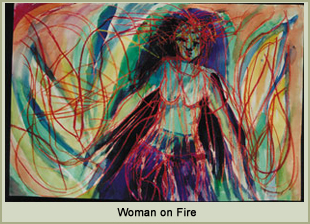 |
|
Art
Therapy is grounded in the belief that the creative process
involved in making of art is healing and life enhancing. Art therapy is regulated in the U.S. by voluntary compliance with the standards of two national organizations. The American Art Therapy Association, Inc which sets educational, professional, and ethical standards for its members. Art therapy allows the silenced voice to be seen and
heard through personal vision creations. The muted voice
becomes a loud expression of emotions, feelings, personal
meanings, thoughts, dreams, struggle and survival through
color, construction of drawings, painting, sculpture, poetry,
music, dance, storytelling and performance art . Many
of the images that are manifested release the
fear of anger . This leads to confrontation of
difficult issues of identity, sexual and physical abuse,
self-esteem, de-evaluation along with the individuals
personal meaning of power in society. Symbolic
imagery appears represent time, space and the self. Deeply
ingrained psychological barriers surface as examination of
self-empowerment is explored. Empowerment is the essential
characteristic of recovery. Often art is autobiographical, like a journal, reflects the mood of the creator. On one day we see our life in a way that may not be apparent on the next as our moods change. Although moods are not permanent, habitually depressed moods become subjects for clinical treatment. The sufferer may be agitated or withdrawn and apathetic, suicidally acting on a sudden impulse or a meticulous plan. There is also the possibility of a dangerous state of self-neglect. Individuals who use art therapy can withdraw into
the art process using their artwork to accompany them on the
journey back to mental health. Wordless insights can
result from insignificant applications of art materials in
which the creator and the art therapist can follow the symbolic
images. I am an art therapist offering private sessions for adolescents and individuals. All art materials are provided, and no training or skill is needed. |







